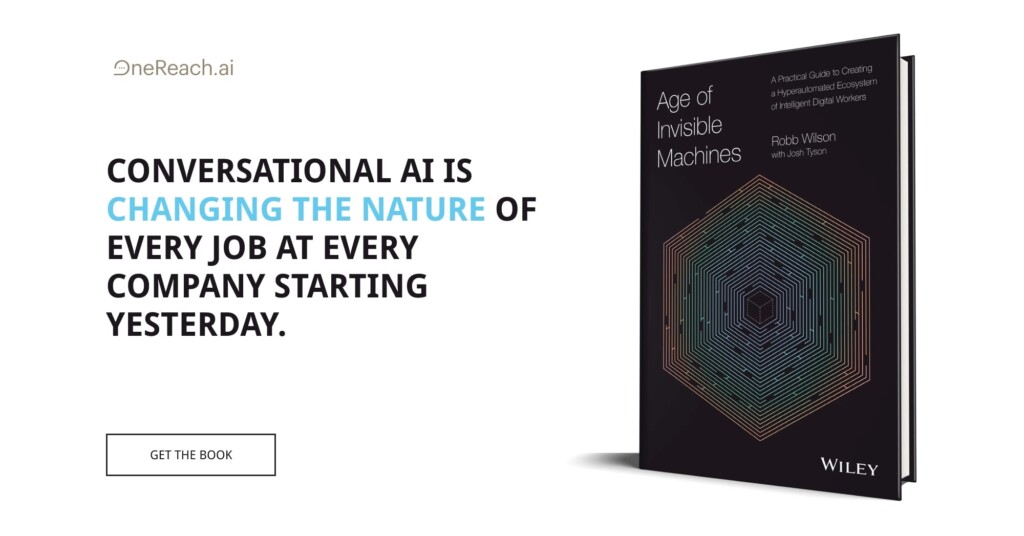The rise of artificial intelligence (AI) has brought about a growing fear that AI will steal people’s jobs or make them obsolete. But, I don’t believe that’s true. I don’t see AI as the enemy. Instead, AI is a tool that can be used to enhance the user experience (UX) in ways that were previously impossible.
One of my favorite quotes of all time is: “First we shape our tools, thereafter they shape us.” This quote by Marshall McLuhan highlights the cyclical relationship between tools and their creators. In the context of AI and UX design, designers have the unique opportunity to harness the power of AI and shape it to their advantage. By using AI to enhance the user experience, designers can not only create innovative, cutting-edge designs but also influence the direction of the entire industry.
“First we shape our tools, thereafter they shape us.”
Marshall McLuhan
As AI technology continues to advance (because it’s not going away folks), designers must take an active role in shaping it to meet the needs of users. Whether it’s through the use of chatbots, machine learning algorithms, or other AI-powered tools, designers have the ability to create experiences that are intuitive, responsive, personalized, and above all else solve the needs of people.
It’s important to remember that as we shape our tools, they will also shape us right back. AI has the potential to greatly improve the user experience, but it also poses challenges and ethical considerations that must be addressed. As designers embrace AI, they must remain vigilant and ensure that their designs promote user privacy, security, autonomy, inclusiveness, and so much more.
Working with AI
As a Designer, I have been able to witness the transformative power of AI in my own work. AI has proven to be a valuable tool that has helped me overcome creative obstacles, saved me time, and improved the overall quality of my design process. One of the most notable benefits of AI in my work has been its ability to help me overcome writer’s block. AI-powered writing tools have provided me with new ideas, outlines, and inspiration— freeing me from the constraints of my own creativity.
Another way AI has helped me in my work is by automating repetitive tasks. By leveraging AI, I have been able to focus on more strategic and creative tasks, rather than spending time on manual, time-consuming processes. This has allowed me to be more productive and efficient, freeing up more time for me to focus on the creative aspects of UX design.
It is important to note that AI is only as good as the data it is trained on and that human intuition and creativity remain essential in UX design. Nevertheless, my experience with AI has been overwhelmingly positive. By embracing AI, I have been able to push the boundaries of my creativity and deliver designs that are more innovative and impactful.
AI as a Tool
AI has often been portrayed as a threat to jobs and human creativity, but this doesn’t have to be the case. AI is not a replacement for human intuition and creativity, but rather a tool that can be used to enhance them. Here are some ways you can use AI as a tool for UX Design:
- User research and testing: AI can assist UX designers in gathering and analyzing large amounts of user data. It can also help designers conduct user research and testing by automating tasks such as data collection, analysis, and reporting.
- Design idea generation: AI can be used to generate design ideas for inspiration. For example, AI can be used to create wireframes and prototypes or to generate visual designs based on user data for inspiration.
- Personalization: AI can be used to personalize the user experience. For example, AI can be used to adapt interfaces to the user’s preferences and habits, such as remembering their preferred font size or color scheme.
- Usability analysis: AI can be used to analyze user interactions with an interface and identify usability issues. For example, AI can track how users navigate an interface, how they interact with specific elements, and how they respond to different design elements.
- Predictive analytics: AI can be used to predict how users will interact with an interface, based on past user behavior and other data. This can help designers create more effective and efficient interfaces.
- Design automation: AI can be used to automate certain tasks, such as layout and typography, freeing up designers to focus on other tasks.
- User experience monitoring: AI can be used to monitor user experience in real-time and provide insights into user behavior. This can help designers make informed decisions about design changes and improvements.
While AI can provide valuable insights and automate certain tasks, it can’t replace human empathy and emotional intelligence. Designers must find a balance between using AI to augment their skills and relying on their own instincts and creativity. It is essential to remember that AI is only as good as the data it’s trained on and that human intuition and creativity are still essential in UX design.
As AI becomes more advanced and integrated into our lives, it will likely play an increasingly important role in the job market. Instead of stealing jobs, AI will create new ones. Designers who find a way to use AI effectively will be in high demand, as they will be able to offer innovative, efficient, and user-centered designs.
The Impact of AI on UX Design
The integration of AI into UX design has already had a profound impact on the industry. It can be through several many benefits and challenges. Here are a few that I’ve observed.
Benefits:
- Improved User Experience: AI can make interfaces more intuitive, personal, and accessible. For example, AI can be used to personalize the user experience by adapting to the user’s preferences and habits.
- Time and Effort Saving: AI can automate repetitive tasks and help designers save time and effort. This allows designers to focus on more important and creative tasks.
- Enhanced Interactivity: AI can provide interactive features and dynamic content to enhance the user experience.
Challenges:
- Accessibility Challenges: One of the biggest challenges is ensuring that AI-powered interfaces are accessible to people with disabilities. This requires designers to have a thorough understanding of accessibility requirements and to test interfaces for accessibility.
- Ethical and Unbiased Algorithms: Another challenge is ensuring that AI algorithms are ethical and unbiased. Designers must be aware of potential biases in the algorithms and take steps to mitigate them.
- Privacy Implications: Designers must also be aware of the privacy implications of AI-powered interfaces. AI algorithms often collect and process large amounts of personal data, which must be protected to maintain user privacy.
Designers must carefully consider these benefits and challenges when using AI in their design work to ensure that the user experience is both effective and ethical. It’s also important to keep in mind that the field of AI and UX design is constantly evolving, so designers must stay up-to-date with the latest developments and trends.
The Future of UX Design and AI
The future of AI in UX design is promising, but also uncertain. Some potential applications of AI in UX design in the future include:
- Predictive Design: AI algorithms will be able to analyze large amounts of user data and predict how users will interact with a design, allowing designers to create more intuitive and user-friendly interfaces.
- Personalization at Scale: AI will enable designers to personalize interfaces on a large scale, providing users with unique and tailored experiences based on their preferences and habits.
- Design Automation: AI will automate more and more aspects of the design process, freeing up designers to focus on the parts that only humans can do while also reducing the time and effort required to create designs.
- Improved Accessibility: As AI technology advances, it will become easier for designers to create accessible interfaces for users with disabilities, making digital experiences more inclusive for everyone.
- Ethical Algorithms: Designers will need to ensure that AI algorithms are ethical and unbiased, avoiding discrimination and ensuring that everyone has equal access to digital experiences.
- Enhanced Collaboration: AI will facilitate collaboration between designers and other stakeholders, providing insights and suggestions to help teams make better decisions and create better designs.
- Augmented Reality: AI will play a key role in developing and enhancing augmented reality interfaces, allowing users to interact with digital content in new and innovative ways.
While the future of AI in UX design is uncertain, it is clear that AI will play an increasingly important role in shaping the future of digital experiences. Designers who embrace AI and continuously adapt to its evolution will be best positioned to take advantage of its benefits and create innovative, intuitive, and accessible designs.
Final Thoughts
AI is not the enemy of UX design, but rather a new tool in our tool-belt that can be used to help us enhance the experience of people. As AI becomes more integrated into our lives, designers must find a way to use it effectively while also ensuring that AI-powered interfaces are accessible, ethical, and private. The future of UX design and AI is promising, but it will require designers to be proactive, adaptable, and continuously learning. By shaping AI and using it to enhance the user experience, designers have the power to shape the future of the industry and the entire world.









